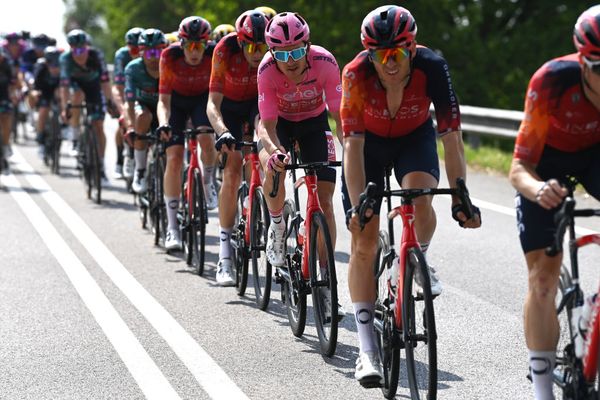A beginner’s guide to the Giro d’Italia
What is the Giro, how does it work, and why is this historic Grand Tour so important?
GCN
The GCN team
© Getty Images
The Giro d'Italia sees riders chase the famous pink jersey in a three-week battle around Italy
The Tour de France is a race synonymous with pro cycling, but its fellow Grand Tours, the Giro d’Italia and the Vuelta a España, are perhaps less well-known in the wider sporting world.
With all talk in the men's cycling sphere turning to the first Grand Tour of the season, beginning in Turin on 4 May, those new to the sport may be asking: what is the Giro d'Italia and why is it so important?
Ahead of the race’s Grande Partenza next week, we’ve dug into the basics of this prestigious race to tell you all you need to know about the Giro d'Italia.
This is a guide to the men's Giro d'Italia in May. To learn more about the Giro d’Italia Women that runs in July, follow the links to see the route and history.
Read more: Route revealed for the 2024 Giro d'Italia
What is the Giro d’Italia?
The Giro d’Italia, meaning the ‘tour of Italy’, was first established back in 1909, six years after the first Tour de France. It is the first of the three Grand Tours, the trio of three-week stage races that form the central pillars of the men’s calendar, and are the most important races for the climbers and GC riders of the peloton. The riders race for 21 days, with just two days off, over a variety of terrains, with the winner often decided in the mountains.
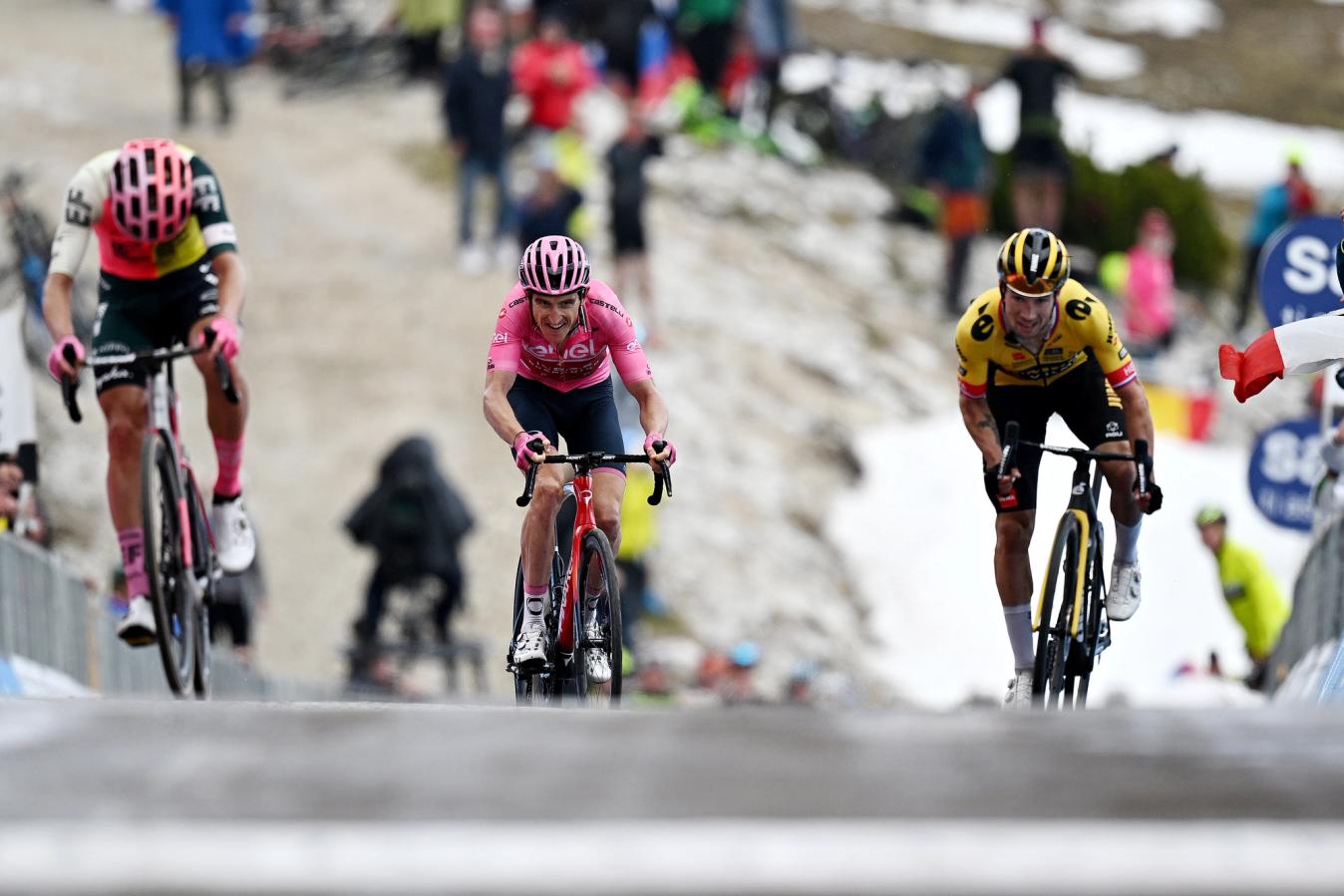
© Velo Collection (TDW) / Getty Images
The biggest Giro battles come in the mountains
Falling in May, the Giro comes shortly after the Spring Classics and welcomes in the start of the much-anticipated Grand Tour season. After the punchier Classics of the Ardennes, this is the time of year when we see the climbers emerge, all vying for the same coveted prize: the maglia rosa.
Read more:
- Geraint Thomas to ride both Giro d'Italia and Tour de France in 2024
- Tadej Pogačar to race the Giro d'Italia in 2024
As is the case with all Grand Tours, the Giro route changes each year as organisers send it around new areas of the country. Despite the route changing annually, the format remains the same.
Flat and rolling stages tend to characterise the first week of the race, with a few smaller mountain stages thrown into the second week to keep the general classification ticking over. A long, individual time trial also falls in this second week to sort the real GC contenders from the rest, before one final week of almost relentless climbing in the Italian Alps brings the race to a close and decides an overall victor.
There are a number of infamous climbs that the Giro d’Italia regularly visits, each one often dictating the outcome of the entire three-week race. Since the turn of the millennium we’ve seen many editions decided on climbs like the Passo dello Stelvio, the Passo di Gavia and the monstrous Monte Zoncolan, names that would make any seasoned pro quake with fear.
What makes the Giro d’Italia important? A long and rich history
Created in 1909, the Giro is the second-oldest Grand Tour, as the race has been around almost as long as the Tour de France, unlike the younger Vuelta a España. Like its French counterpart, the Giro was born out of an attempt to boost sales of a national sports newspaper, La Gazzetta dello Sport. The first edition almost didn’t go ahead as the organisers lacked the 25,000 lira needed to hold the race.
After a few charitable donations from other Italian businesses, which included a 3,000 lire donation from La Gazzetta’s publishing rivals, Corriere della Sera, the race went ahead and 127 riders rolled out of Milan on 13 May at 02:53am, ready to embark on an eight-stage adventure into the unknown.

© Velo Collection (TDW) / Getty Images
La Gazzetta dello Sport continues to be one of the most popular sporting newspapers in Italy
The home favourite, Luigi Ganna, won three of these stages on his way to winning the overall classification — crowning himself the first-ever victor of what would soon become Italy’s most prestigious bicycle race. After his landmark victory, Ganna immortalised both himself and the tortuous race he had just won with six simple words, “Mi fa tanto male il culo!” or, “My ass hurts so much!”
Like the Tour de France did in its early years, the Giro d’Italia snowballed in popularity and by the 1920s it was one of the biggest sporting events in the country. One of the Giro’s legends, Alfredo Binda, dominated during this decade, taking four overall victories before a record-breaking fifth in the 1930s. Only two riders that followed him have managed to equal his incredible achievement and score five wins in this race, Fausto Coppi in the 1940s and 50s, and Eddy Merckx in the 1960s and 70s.
Coppi’s name is one of the many synonymous with the Giro d’Italia, as is his arch-rival’s, Gino Bartali. The two Italians animated some of the most memorable editions of the Giro and created a rivalry that split an entire nation, much like Jacques Anquetil and Raymond Poulidor did in France during the 1960s.
Several other legends of Italian cycling followed Coppi and Bartali, each one claiming Giro titles of their own. These Italian icons include Felice Gimondi, the second-ever rider to win all three Grand Tours; Gianni Bugno, a two-time World Champion; and of course, Marco Pantani, a rider known to many as ‘il pirata’ — the pirate — for his swashbuckling style and signature earrings and bandana.
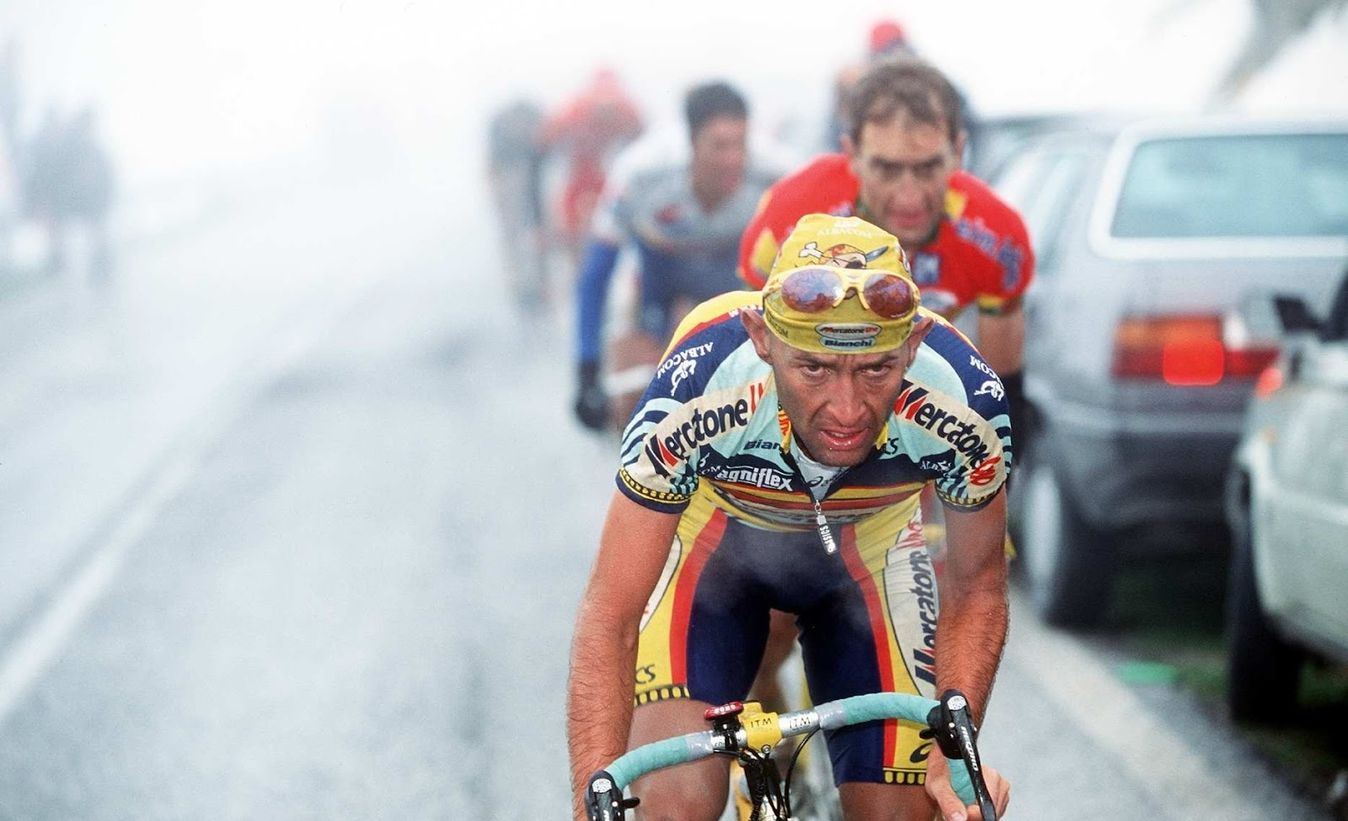
© Velo Collection (TDW) / Getty Images
Marco Pantani only won the Giro d’Italia once, in 1998, but he animated many editions during the 90s and early 2000s, writing himself into cycling legend
In more recent years the Giro d’Italia has diversified its pool of winners and has seen plenty of other nations flourish. Canada, Colombia and Ecuador have all taken maiden overall victories in the last 15 years, courtesy of Ryder Hesjedal (Canada) in 2012, Nairo Quintana and Egan Bernal (Colombia) in 2014 and 2021, and Richard Carapaz (Ecuador) in 2019. Last year’s race was won by a Slovenian, Primož Roglič, who took over the lead from Welshman Geraint Thomas in a dramatic penultimate day time trial.
The Italians have remained stalwart and ever-present in this race, however, since 2010 they’ve taken four overall titles – one with Ivan Basso in 2010, one with the late Michele Scarponi in 2011, and two with the evergreen Vincenzo Nibali in 2013 and 2016. The tally of Italian wins in this race gets even greater the further back through history you go. In all, the home nation has taken an incredible 69 overall titles in this race. To put that figure into perspective the closest nation to them is Belgium who sit on a lowly seven, followed by France on six.
Read more: Vincenzo Nibali: The final week of the Giro d'Italia is the most feared
What are the Giro d’Italia jerseys?
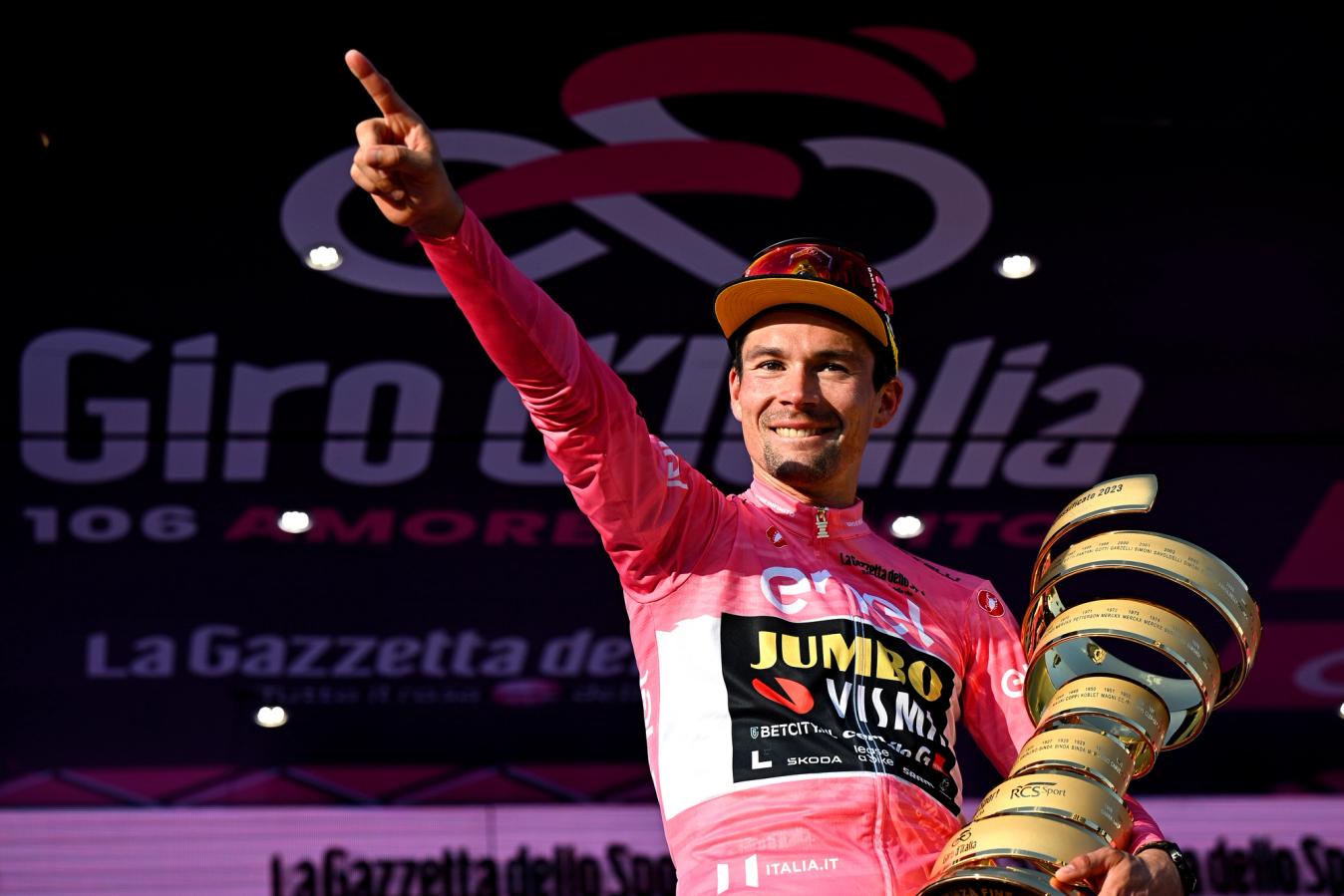
© Velo Collection (TDW) / Getty Images
The pink jersey is the central icon of the Giro d'Italia
Like all Grand Tours and stage races, the Giro features some special jerseys that are awarded to leaders of various classifications. The most important is the pink jersey (maglia rosa) for the overall leader, but riders are also gunning for the purple points jersey (maglia ciclamino), blue mountains jersey (maglia azzurra) and the white best young rider jersey (maglia bianca). Here’s how they each work.
Pink jersey
The pink jersey, or maglia rosa, is awarded to the rider who is leading the general classification. That means, basically, the rider who has completed the stages so far in the quickest time, including any time bonuses. It’s the jersey everyone wants to wear, and will likely change hands several times throughout the race, before whoever is wearing it on stage 21 is named overall winner of the Giro d’Italia.
Purple points jersey
The purple (or cyclamen) jersey, known as the maglia ciclamino in Italian, is worn by the leader of the points classification. This is usually fairly synonymous with a sprinting classification, with the bulk of the points available at the finish of flat stages, and at intermediate sprint points during the stages. The key to leading this classification is consistency, with riders needing to pick up points all throughout the race if they want to win this classification come the race finish.
Read more: The jerseys of the Vuelta a España explained
Blue mountains jersey
The blue jersey (maglia azzurra) denotes the leader of the King of the Mountains classification. Each classified climb in the race will have a number of points attached to it, varying from just a few for the rest rider to crest a category 4 climb, to a bigger haul of points for the first atop the hardest, hors catégorie climbs. This jersey sometimes goes to the top GC riders, but can also be targetted by strong climbers who infiltrate breakaways on the most points-heavy stages.
White young rider jersey
The white jersey (maglia bianca) for best young rider is, like the pink jersey, simply based on time rather than points, and is worn by the young rider who sits highest on GC. The age cut-off is 26, so any rider who is under 26 is eligible for this jersey. Previously, this jersey was to reward the young riders who rarely were in contention for the overall, but with the ever-more youthful GC contenders we see in modern cycling, the top favourites for white are often top 10 contenders in their own right too.
When is the 2024 Giro d’Italia?
The 2024 Giro d’Italia will take place from 4-26 May, starting in Piedmont for the opening weekend, before taking on a three-week traverse around Italy to decide which rider will join the roll of honour, and who will take home the coveted jerseys.
Along the way, the riders will be challenged by 68.2km of individual time trialling, six summit finishes and stages evoking the spirit of Strade Bianche and Milan-San Remo. It will be the shortest Giro d'Italia (at 3,321km) since 1979 and has 42,000m of climbing scattered throughout.
Read more: Giro d'Italia 2024: Five key stages that will decide the winner
Beginning next weekend in Turin, the opening few days are as hard as we have seen in many years, with stage 2 to Oropa presenting the earliest summit finish seen in the race since 1989. It may be here where Tadej Pogačar (UAE Team Emirates) gets hold of the leader's pink jersey for the first time, with the Slovenian set to make his debut in the race this year.
As the two-time winner of the Tour de France and the holder of six Monument victories following his recent Liège-Bastogne-Liège success, Pogačar is the overwhelming favourite heading into the Giro, but he will certainly be challenged by Ineos Grenadiers and Geraint Thomas, who will be hoping to go one better than their runner-up slot last year.
Elsewhere, Decathlon AG2R La Mondiale's Ben O'Connor is a man in form and with a great chance at achieving his first Grand Tour podium, whilst Romain Bardet (dsm-firmenich PostNL), Eddie Dunbar (Jayco AlUla) and Hugh Carthy (EF Education-EasyPost) will certainly be in and amongst it.
For everything you need to know about the 2024 Giro d'Italia, from the history of the race to this year's route and start list, be sure to check out our dedicated race hub.
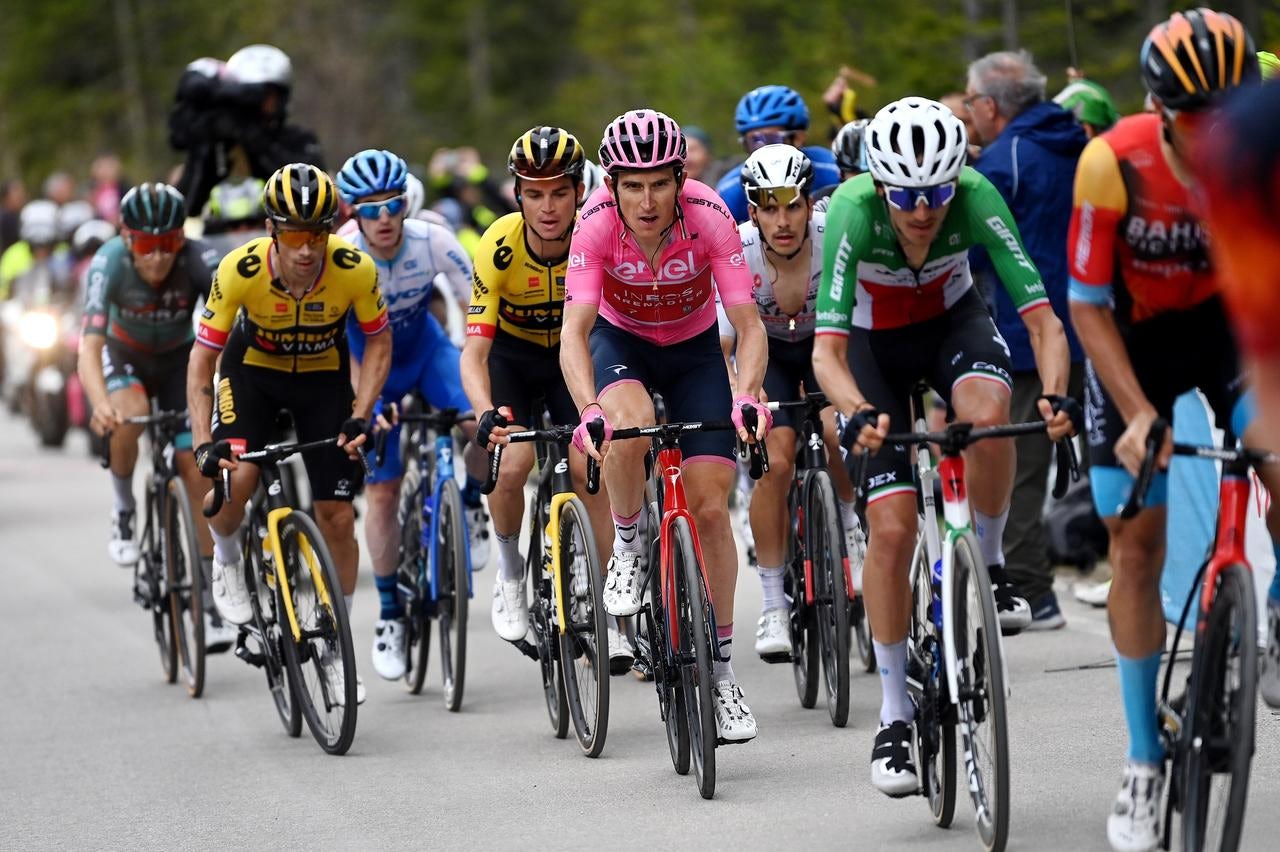








GT.jpg?w=600&auto=format)







